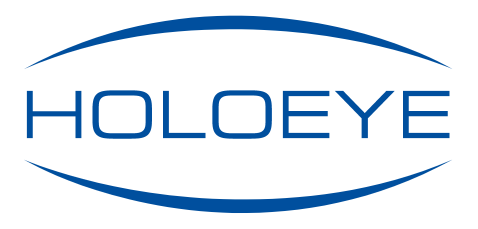LC 2012 Spatial Light Modulator (transmissive)
The LC 2012 is our basic Spatial Light Modulator system based on a translucent liquid crystal microdisplay with a resolution of 1024 x 768 pixel (XGA). The device is mainly intended for proof of concepts and education.
LC 2012 Spatial Light Modulator – Microdisplay Features
Display Type
Transmissive LC
Resolution
1024 x 768
Pixel Pitch
36 µm
Fill Factor
58 %
Active Area
36.9 x 27.6 mm (1.8” Diagonal)
Addressing
8 Bit (256 Grey Levels)
Signal Formats
HDMI – XGA Resolution
Input Frame Rate
60 Hz
The LC 2012 is our basic Spatial Light Modulator system based on a translucent liquid crystal microdisplay with a resolution of 1024 x 768 pixel (XGA). The device is mainly intended for proof of concepts and education.
Based on a twisted nematic (TN) liquid crystal display simply phase mostly modulation is possible as the twist always causes a coupled polarisation effect (amplitude modulation). The SLM provides a phase shift of about 2 π at 450 nm, about 1.8 π at 532 nm and around 1 π at 800 nm.
The microdisplay and drive electronics are packaged into a compact box for easy integration into optical setups. The LC 2012 is addressed using a standard HDMI interface and brightness and contrast settings can be performed using an USB interface. The LC 2012 Spatial Light Modulator can be used for phase (phase mostly) or amplitude modulation applications dependent on the configuration. The mode depends on the incident polarization and polarizer-analizer settings.
LC 2012 Spatial Light Modulator Kit – Contents:
Software Features
The LC 2012 spatial light modulator devices can simply be addressed like an external monitor using the standard DVI / HDMI interface of the graphics card. No additional software or dedicated hardware is needed to operate the SLM.
The LC 2012 SLM is delivered with a simple Configuration Manager software. The Configuration Manager can be used to change the brightness and contrast of the LC 2012 display and for vertical flipping of the image. This requires an USB connection to the LC 2012 driver.
In addition a HOLOEYE SLM Pattern Generator software is provided with the SLM:
- Computation of computer generated holograms (CGH) from user defined images
- Generation of SLM signals representing basic optical functions such as lenses, gratings, axicon and vortex functions
- Superposition of CGH’s with basic optical functions to combine functionalities
Besides that a special SLM Slideshow Player software comes with the device. Also an SLM Display SDK is available for download which provides APIs (Application Programming Interface) for different programming languages to show images and data/ phase arrays directly on a HOLOEYE Spatial Light Modulator:
- National Instruments LabVIEW™ 8.6 and later
- MathWorks MATLAB® R2009b and later
- Octave 5.2
- Python™ 2.7 and 3.x
- C or C++ compiler (e. g. Microsoft Visual C++ Compiler)
Papers & References
HOLOEYE’s Spatial Light Modulators are used in research in various fields of applications. In our publication library you find an extensive selection of links to publications and research papers.





